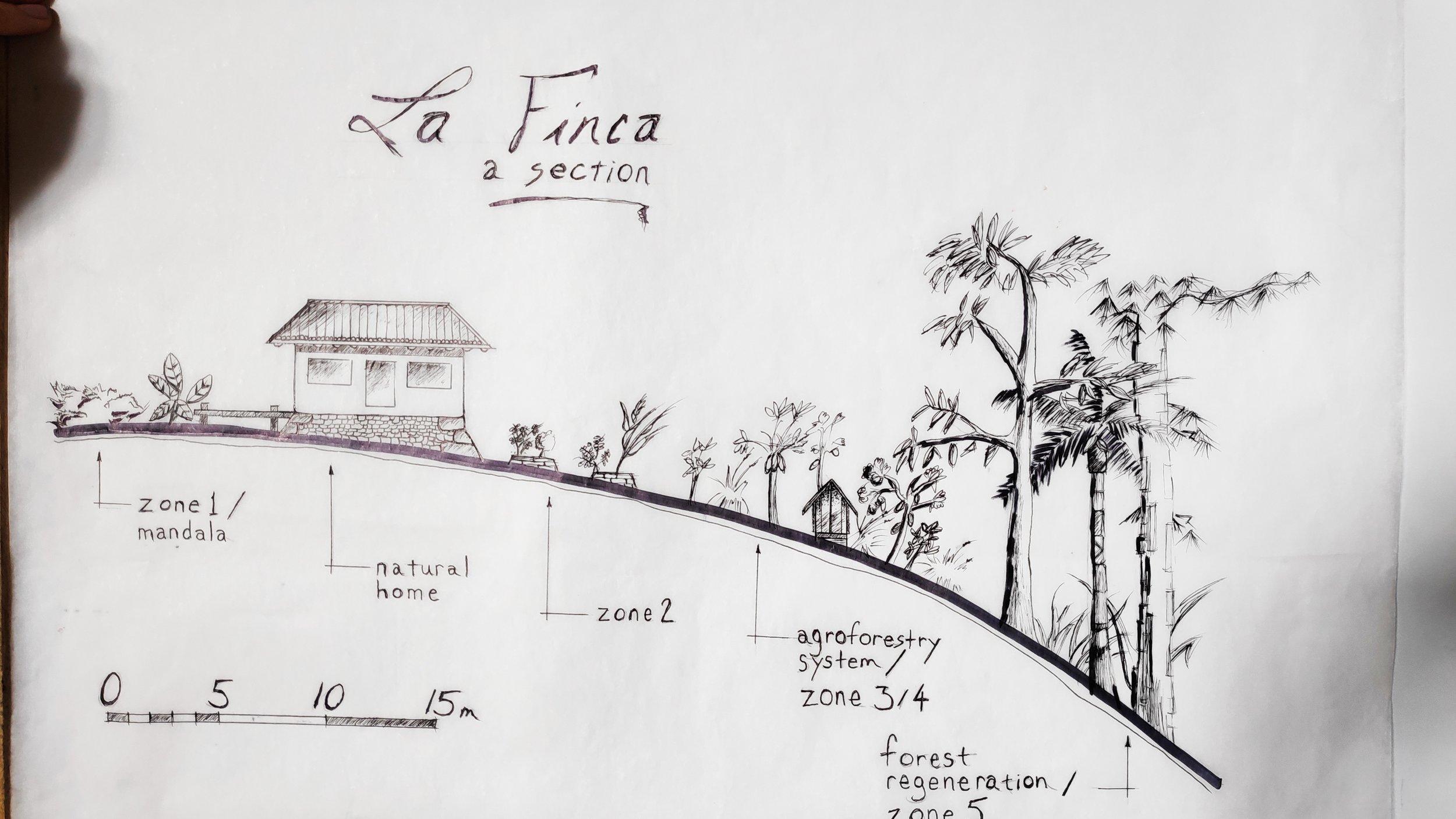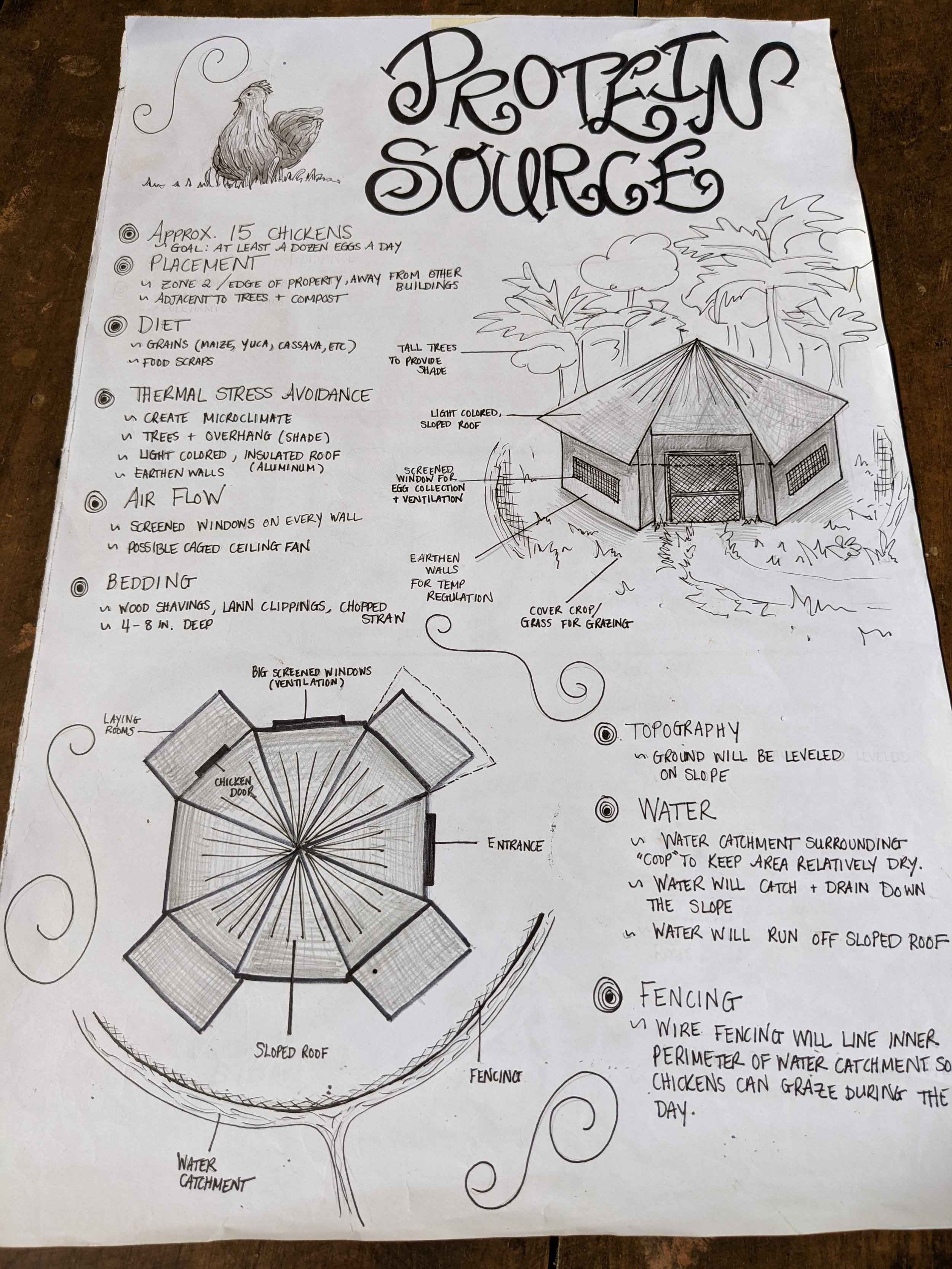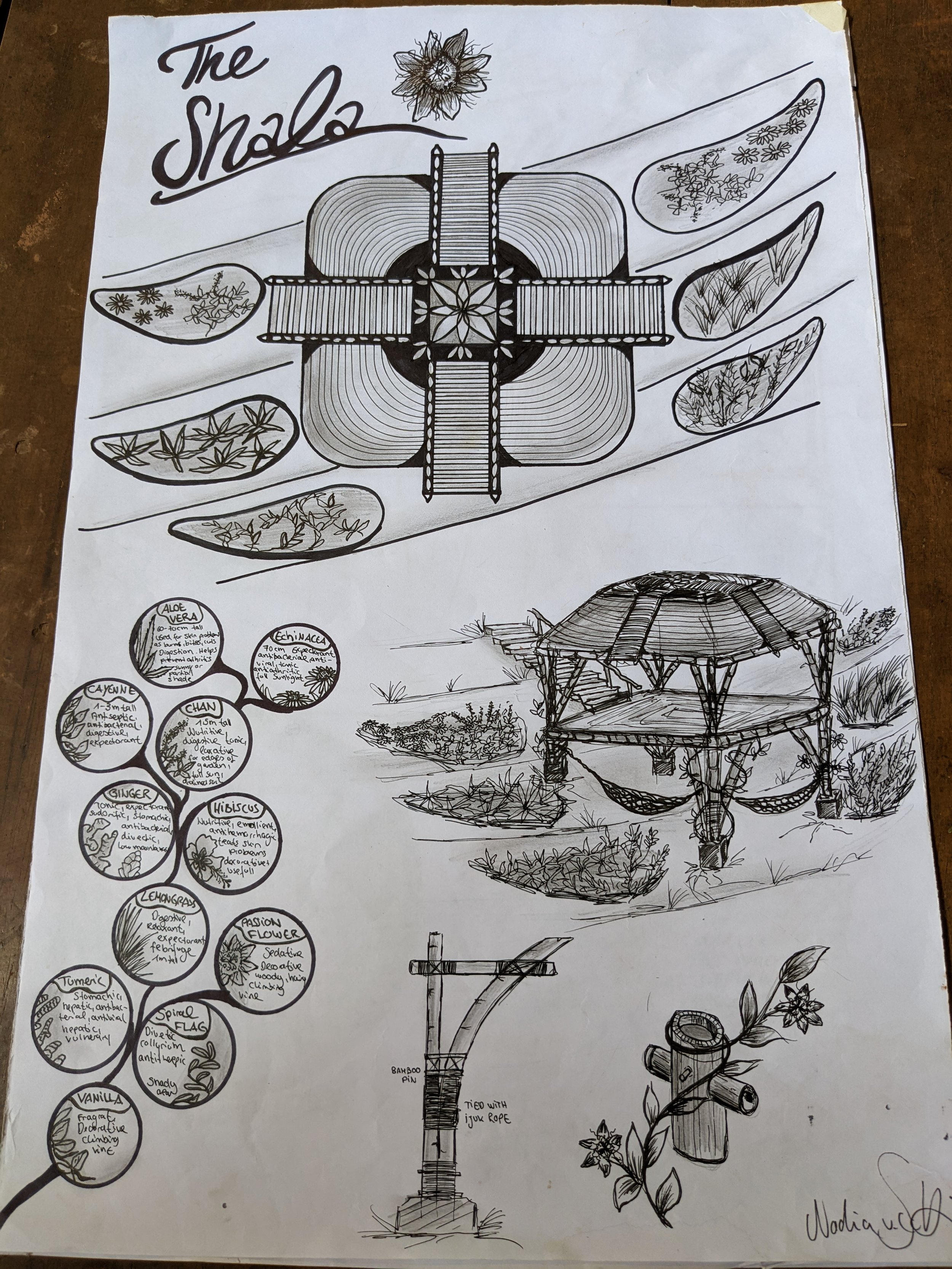The Problem with Permaculture – Understanding Elements and Functions
By core team member, Nic Donati
DISCLAIMER. It is important to understand that Rancho Mastatal is by no means perfect. In fact much of what we have learnt has been the hard way, through many failures. I also don’t believe we are alone in making these sometimes questionable decisions. It is mainly for this reason that I feel compelled to try write this article and clarify some of the processes and ideas that are so often misunderstood, misrepresented and incorrectly applied in Permaculture. The goal of this article is not to criticize people for what they are doing, but merely to offer insight into the processes which will (hopefully!) lead to success and to learn from some of our failures (and of course successes!).
How often have you heard someone say “oh yeah we have a permaculture farm or garden because we have a [insert permaculture cliché element]”. They believe their project is permaculture based because it has some of the elements that are usually used as examples, such as composting or they have chickens, maybe a herb spiral or a rainwater catchment system?
I hear it all the time – the idea that somehow permaculture is a catalogue of elements and we have to use them in order for it to be permaculture. Herein lies the problem with permaculture… or as I would say the misunderstanding of what permaculture is.
These systems are all great systems and have proven success when used in the right context. Often they are used as examples in permaculture, as they do function very well in a number of contexts, have broad spectrum applicability and are relatively easy to install.
So why aren’t THEY permaculture, why am I saying that those elements are not permaculture if they work?
Well the simple answer is that permaculture is not a pre assigned group of elements; permaculture is a design methodology that helps you navigate through the myriad of options and select the elements that are going to provide the functions and outputs you desire.
Ok are you lost or confused? Let me break it down into examples of what I mean, I will give real world examples in order to help us understand what I mean by elements, functions, inputs and outputs.
The first thing we need to understand is what our context is and what our goals are. This will help us establish what functions we want to achieve and will help us understand what elements we might want to use in order to achieve these functions.
Establishing Context
What do I mean by establishing our context? Firstly we need to understand where we are and in order to do this we need to look at four main areas. We often do a lot of these types of assessment intuitively with or without realizing, but it is helpful to try and articulate your context so that you can refer to them again in the future. For further reading refer to Alan Savory’s work on holistic management.
Social
The first thing to establish is who are we talking about? Is it you on your own, you and a partner, a family, a community of people, etc…? This will be important as it will probably affect a number of the other categories, like legal issues and potentially your resource base.
Ecological
The next part of establishing your context is assessing your geographical location, weather patterns, climate, landform, water access, etc… This is going to affect many things, including what is possible to grow, how long your growing season is, establishing heating and cooling needs for a house, etc…
I will give you this example as it is pretty commonly brought up to me. Someone has decided that they want a particular element – in this case a cob house. My first question always is “where do you live?” - this is establishing context. In this scenario they live in a climate where building a cob house is quite literally insane and illegal! Cob is a very poor insulator and in many scenarios will not meet any environmental standards for insulation as defined by many temperate zone building codes. My second question is “why do you want a cob house?” – establishing the goal. Often their response is something to do with wanting a curvy naturally built structure (a goal). Obviously this person has fallen into the trap of deciding on an element (a cob house) without succinctly establishing their context or goals.
In this scenario, through asking questions we can begin to get to the core of why someone wants this specific element, what goals do they have and also what the function is (we want our house to be warm and comfortable, a poorly insulated house will not achieve that, at least not easily). At this point knowing their context and goals there is already a perfectly good, established design solution, it is called strawbale. Stawbale building has excellent insulative properties that meet the most stringent of building codes, it is a natural material and with some additions of clay and straw plasters can be made curvy and round or whatever your heart desires.
Legal
We need to establish our legal context, for instance are we in a rural, urban or suburban setting or somewhere else, this is going to affect what we can do in terms of space and also what we are legally allowed to do. For instance in urban settings there may be prescribed methods of how to deal with sewage, like you have to connect to the municipal sewage system if it available. Whereas if you are in a rural setting you are able to legally decide which type of sewage treatment system you would like to use. Now I’m talking about your legal context here and of course where you are located (not just within a country but in different countries is going to affect the rules). This also might affect if you will have space to do certain things. There is no point establishing a goal of producing all of your own dairy if you live in an apartment and only have access to a balcony. In many urban areas there are rules about animal ownership not to mention the practicalities! Seems obvious right? Well of course I am using examples that have obvious outcomes, it gets more complicated and the practicalities (the inputs) can become either harder to define or more difficult to predict.
We will also need to consider any other legal ramifications of our endeavor like labor laws for business, or taxes, whether that river that runs through your property is legally available or if you can cut down trees? These are all things which will dictate what you can or can’t do if we want to stick to the confines of the law.
Resource base
What resources we have available (time, money, energy, labor, etc…) is going to massively influence what is achievable. Like it or not our resource base is a critical factor when establishing our context and being realistic about this is going to be important in the success of any project.
A common theme I here is that people maybe don’t have the labor resource pool that is needed to achieve a particular goal so they are going to start a volunteer program in order to provide the labor. Again, this is a backward approach, you are setting a goal that is only achievable if a whole new program is designed and implemented. The inputs involved in managing people is huge and often overlooked, the structures required in order to successfully implement a volunteer program is vast especially if you want them to do what you want them to do as opposed to what they want to do. Read our article about running a successful internship program here.
Goal Setting
Now that we have more or less outlined out context we want to establish some goals for ourselves. There are many goal setting methods and techniques; the important thing to try and distill down is what is the underlying goal that you are hoping to achieve.
Let’s look at one of the examples that we used already, the desire to build a cob house. At this stage we should try and distill out the essence of the goal, let’s go through that process so that we can look at the functions and then identify the element.
GOAL: Build a Cob House
Let’s start with build: do we want to build it, do we have the resources to pay someone else to do it? Does it need to be a cob house? Can it be a natural material that also allows artistic freedom? Most importantly we want to have a house that is beautiful and functional, and as we discussed before we need a well-insulated house (if we live in a temperate climate). So maybe we can redefine our goal as something like this:
GOAL: To have a beautiful, functional and natural home.
Once we have distilled out our goal we can identify the functions that we want. Here is an example:
Home – somewhere that provides shelter for us primarily but is comfy and cozy
Beauty – something well designed with art built into the structure through sculpture and curves
Functional – well insulated and resistant to the climate, low maintenance
Natural – using materials that are local and have lower amounts of processing or low carbon footprint
Now that we have identified our functions we can begin to research our elements that meet these functions, this is the fun stage. This involves reading, researching online, sketching etc… soon we will settle upon our element that will provide all (or most) of our functions and meet our goal that makes sense within our context. This is good design; this is the methodology that a permaculturalist will employ.
Students in our Permaculture Design Course presenting their projects
I hope that you can see the difference in the methodology. One is looking at the goal and deciding from there what element we should use, and one is accumulating elements because we think they are a good idea without going through a design process.
We often innately do some of this process. It is much easier to do this process within the realms of things that we already know well and understand. As a natural builder it is much easier for me to distill out the goal and the functions within natural building as I am very familiar with a lot of the variables and a lot of the options. If you are new to this, there are obviously endless options and opportunities. I would recommend taking a permaculture design certification (read here why should take one at Rancho Mastatal). This will help contextualize lots of your goals and ideas. A PDC will give you the opportunity to talk about your ideas with other people so you can cross pollinate and create wonderful new schemes and plans.
To summarize the problem with permaculture, it is the misunderstanding of the design process not with the design process itself, although there are many people who are always working to improve the design process too. Here is a nice little diagram that was created by AppleSeed Permaculture that nicely summarizes the design process.
Hope you enjoyed my theory on this topic.
Join us for one of our two yearly Permaculture Design Courses to learn more about the topic and get inspired!









